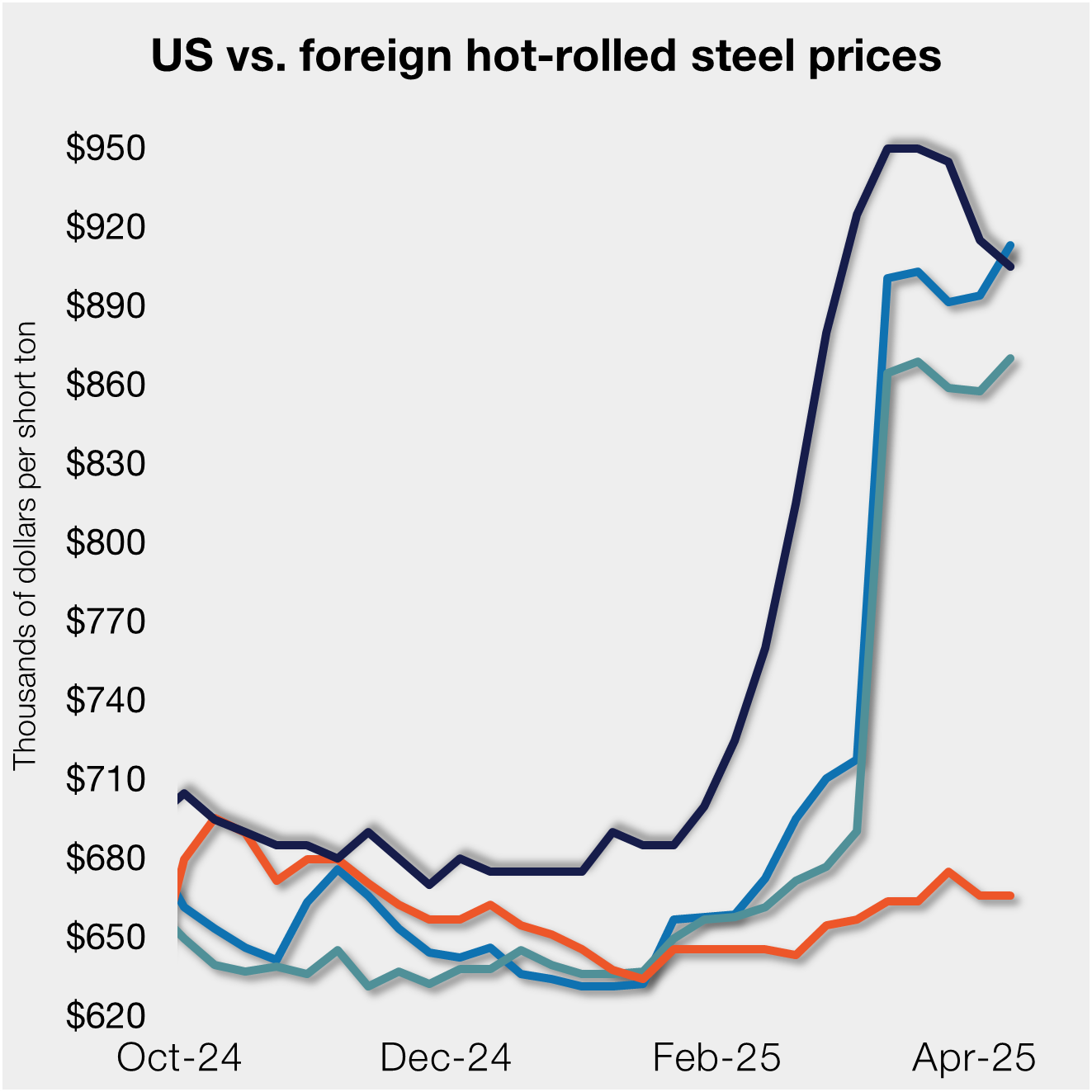Steel Products
Construction Employment Strongest in Western Metro Areas
Written by Sandy Williams
August 2, 2017
Construction employment made the biggest gains in metro areas in June with particular strength in the western U.S., according to an analysis of data by the Associated General Contractors of America. The largest losses were in the middle or eastern parts of the country, noted AGC Chief Economist Ken Simonson.
AGC officials noted that inconsistent metro area job growth was coupled with declining construction spending. The association urges Congress and the White House to “act quickly to fund and finance needed upgrades to the nation’s aging infrastructure.”
“Finding new ways to fund and finance needed infrastructure repairs will help ensure that construction job growth remains both widespread and robust,” said Stephen E. Sandherr, the association’s chief executive officer. “More important, modernizing our aging and overused public works will make our economy more efficient and help boost overall economic growth.”
{loadposition reserved_message}
Construction employment data analysis from AGC:
Construction employment increased in 264 out of 358 metro areas between June 2016 and June 2017, declined in 57 and stagnated in 37, according to a new analysis of federal employment data released today by the Associated General Contractors of America. Association officials noted that even though most metro areas added construction jobs, the employment gains were particularly pronounced in the western third of the country.
“Western metro areas, from Southern California and Nevada to Oregon and Washington, logged many of the largest absolute and percentage increases in construction employment in the past year,” said Ken Simonson, the association’s chief economist. “In contrast, the metros with the largest job losses were all in the middle or eastern portions of the country.”
Riverside-San Bernardino-Ontario, Calif., added the most construction jobs during the past year (18,100 jobs, 20 percent), followed by Los Angeles-Long Beach-Glendale, Calif., (10,400 jobs, 8 percent); Las Vegas-Henderson-Paradise, Nev., (9,900 jobs, 18 percent); Portland-Vancouver-Hillsboro, Ore.-Wash., (8,200 jobs, 13 percent) and Tampa-St. Petersburg-Clearwater, Fla., (8,200 jobs, 12 percent). The largest percentage gains occurred in the Bloomington, Ill., metro area (63 percent, 1,900 jobs) followed by Lewiston, Idaho-Wash., (29 percent; 400 jobs); Lake Charles, La., (24 percent, 4,700 jobs); Riverside-San Bernardino-Ontario; Detroit-Dearborn-Livonia, Mich., (19 percent, 4,200 jobs) and Merced, Calif., (19 percent, 400 jobs).
The largest job losses from June 2016 to June 2017 were in Houston-The Woodlands-Sugar Land, Texas, (-5,200 jobs, -2 percent), followed by Middlesex-Monmouth-Ocean, N.J., (-2,900 jobs, -7 percent); St. Louis, Mo.-Ill., (-2,600 jobs, -4 percent); Kansas City, Mo., (-1,900 jobs, -7 percent) and Toledo, Ohio, (-1,800 jobs, -11 percent). The largest percentage decreases for the year were in Grand Forks, N.D.-Minn., (-21 percent, -1,000 jobs); followed by Danville, Ill., (-17 percent, -100 jobs); Casper, Wyo., (-12 percent, -400 jobs); and Toledo and Charleston, W.Va., (-10 percent, – 700 jobs).

Sandy Williams
Read more from Sandy WilliamsLatest in Steel Products

Return of S232 zapped gap between US and EU HR prices, Asian HR remains cheaper
Domestic hot-rolled (HR) coil prices declined this week for a third straight week. Most offshore markets bucked the trend and gained ground. Uncertainty in the US market around tariffs, especially after “Liberation Day,” caused US prices to slip as buyers moved to the sidelines. It’s unclear to date whether the 90-day pause on the more […]

SMU Steel Demand Index momentum slows further
SMU’s Steel Demand Index growth eased again, according to early April indicators. The slowdown comes after the index reached a four-year high in late February.

SMU Community Chat replay now available
The latest SMU Community Chat webinar reply is now available on our website to all members. After logging in at steelmarketupdate.com, visit the community tab and look under the “previous webinars” section of the dropdown menu. All past Community Chat webinars are also available under that selection. If you need help accessing the webinar replay, or if your company […]

US light-vehicle sales accelerate in March
US light-vehicle (LV) sales increased to an unadjusted 1.59 million units in March, more than a 30% surge over February and 10.7% above year-ago totals, according to US Bureau of Economic Analysis data.

Construction adds 13,000 jobs in March
The construction sector added 13,000 jobs, seasonally adjusted, in March, but tariffs could undermine the industry.
